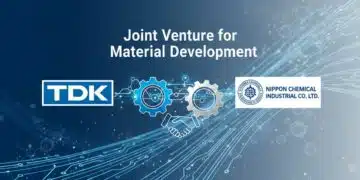Release of MIL-PRF-32535 for discrete MLCCs has led to the discussion of stacked ceramic capacitors based on BME technology.
Stacked ceramic capacitors are multiple discrete multi-layer ceramic capacitors (MLCCs) terminated onto a common lead-frame for through-hole or SMT operations. They capture many of the inherent benefits of MLCC technology, like a low-loss material set, low ESR (equivalent series resistance), and higher reliability.
Typical applications like switch mode power supplies need larger capacitance values and ripple current capabilities. Stacked MLCCs compete with discrete electrolytic capacitor technology in terms of capacitance range but have an advantage in terms of voltage and temperature capability, which naturally increases their reliability, thereby making this a preferred technology for defense applications despite its higher price point compared to electrolytics.
The Military Performance (MIL-PRF) standard for stacked ceramic capacitors is MIL-PRF-49470. Suppliers can build to this specification and provide their devices for predominantly defense and aerospace applications. They are manufactured using precious metal electrode (PME) MLCCs, which employ a combination of palladium, silver, and/or platinum as the bulk of the electrode system. This has been used for decades and has established a strong reputation for PME devices.
More recently, however, MIL-PRF-32535 was released, and this features base metal electrode (BME) technology, predominantly nickel. It’s intuitive to focus on the cost efficiency of BME over PME devices, but there are other ramifications in the manufacturing process that are not immediately apparent, but are helpful for designers, component engineers, and program managers in the defense sector to consider.
MLCCs must be sintered to create the monolithic block of dielectric and electrode layers. The temperature profile for firing BME devices is significantly different to PME devices. PME processes are more concerned about evaporating the PME materials than are BME processes. Because of this, there is more flexibility for ceramic engineers creating BME devices to develop a dielectric material that can be sintered at higher temperatures that will realize a much larger capacitance value in the finished MLCC that is smaller than an equivalent PME device, which has huge implications for defense applications.
The development and acceptance of MIL-PRF-32535 was made possible largely by the help of a few key suppliers in this field, and it’s interesting to note that new slash sheets are coming out for low inductance versions of these discrete MLCCs that can keep up with the high-speed decoupling demands of powerful FPGAs, for example.
The MIL-PRF-32535 for discrete MLCCs has led to the discussion of stacked ceramic capacitors based on BME technology. These would be similar to devices created under the existing M49470 standard, but with higher capacitance densities, following closely with the progression of high performance SiC and GaN HEMTs for commercial, automotive, and high-reliability applications.
Moving from a lead-less to a lead-frame assembly conveniently packages an array of MLCCs into a smaller footprint to conserve PCB surface area, but there are other benefits that may not be readily apparent. For example, MLCCs can potentially be prone to cracking from mechanical strain caused by PCB flexure, high shock and vibration environments, and thermal coefficient of expansion (TCE) mismatch from assembly, rework, temperature cycling tests, or even operating conditions, to name but a few. Although there are numerous sources of strain, their lead-frames provides relief to stacked ceramic capacitors.
In summary, stacked ceramic capacitors based on BME technology are a great fit for applications with tough mechanical, thermal, and electrical design constraints.
































